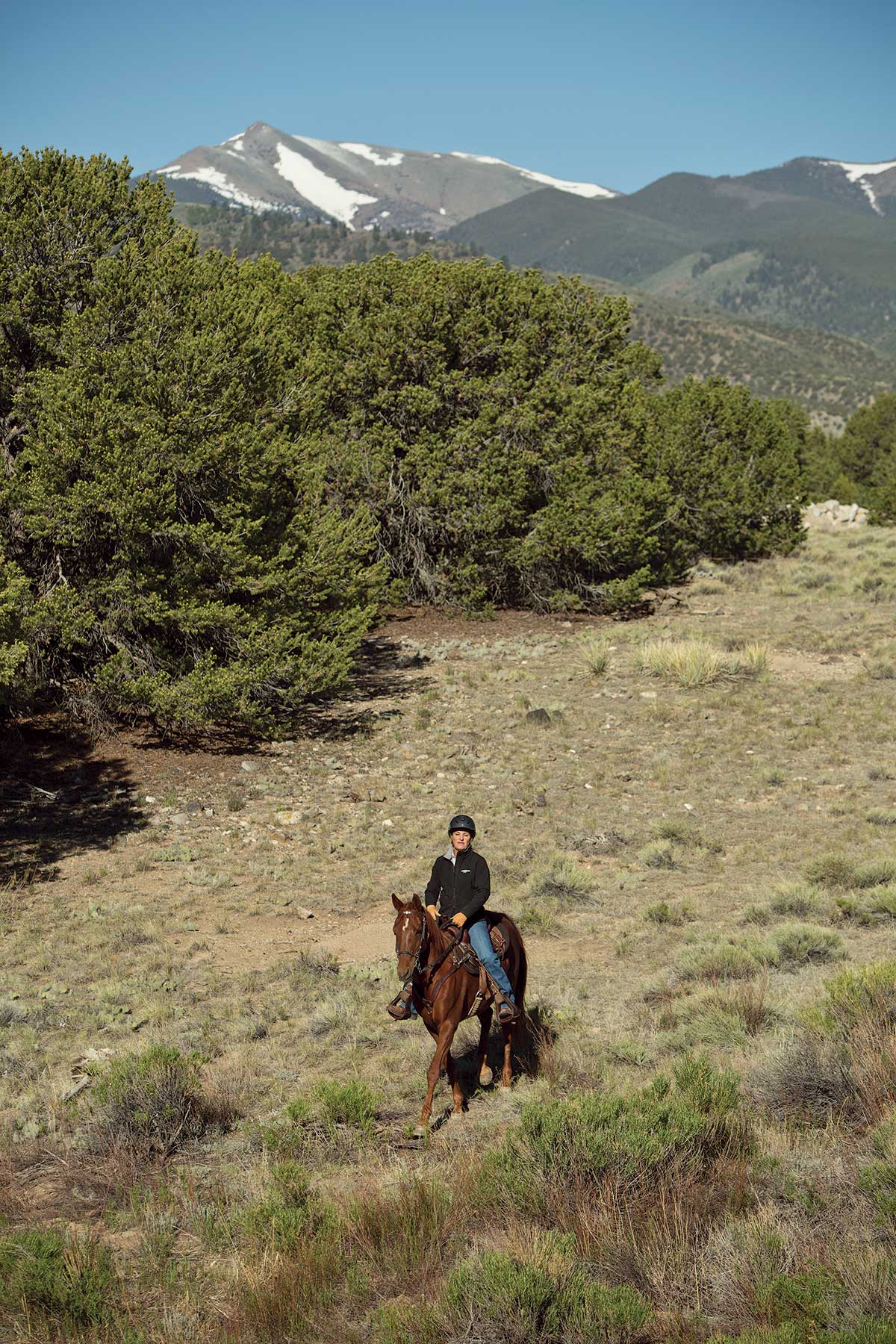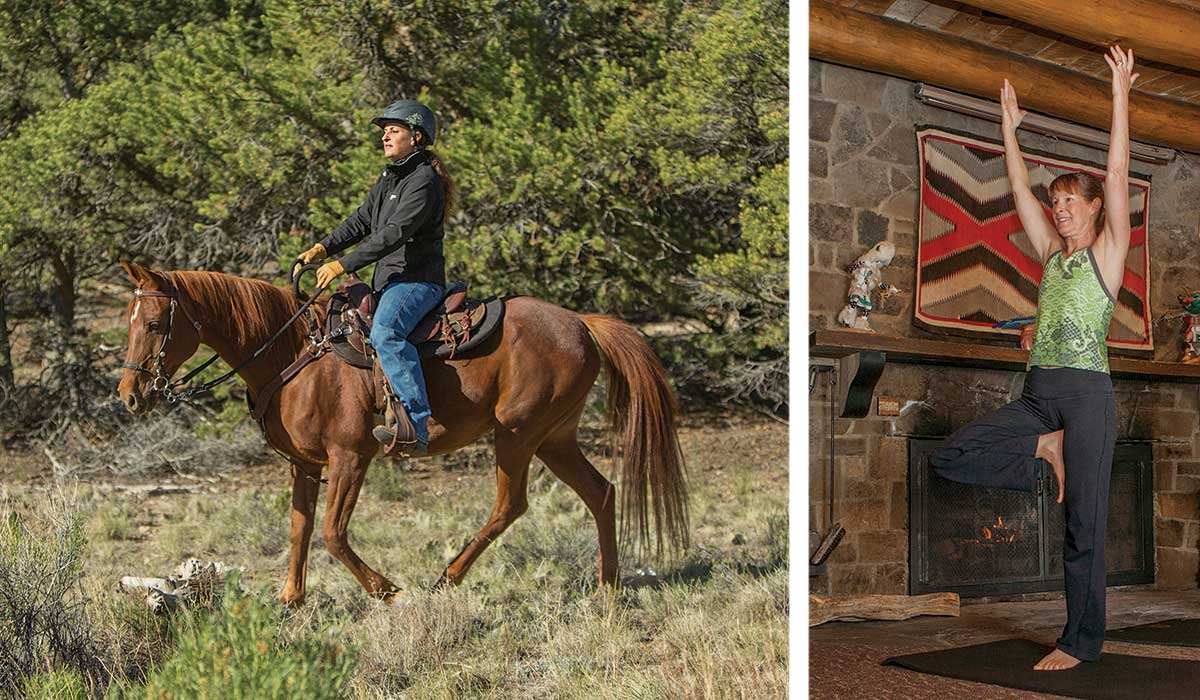
Posture, balance, and core strength are critical components for any trail rider. When you ride, you must be able to balance while moving. You must have a strong core (torso) to keep a natural alignment so you can keep your balance without tensing the wrong muscles.
[READ: How to Be Equestrian Fit]
I want to trail ride the rest of my life. Achieving this goal will depend upon my ability to maintain my posture, balance, and core strength. Practicing yoga is a great way to enhance these capabilities.
Ready to ride for the rest of your life? Stay in the saddle with these guidelines. Here, I’ll teach you how to maintain correct upper-body posture and ride in alignment and in rhythm with your horse. I’ll also explain how to enhance your balance, build your core strength, and get started doing the riding-specific yoga exercises I love.
Watch Your Posture
When you’re riding, you must move with fluidity so that your joints don’t lock and move against your horse. When you lock even one joint, you affect the stiffness in your entire body. It’s tough to move in balance when you’re stiff—and you’ll likely feel sore and exhausted at the end of your ride.
Posture naturally declines with age. To ensure that you’re riding in rhythm with your horse, first check your riding posture. Maintain a straight line from ear to shoulder, then down through your hip and heel. This position brings your skeletal system into alignment to give you natural stability.
This basic alignment rule holds true no matter what discipline, sport, or saddle you ride in. It applies to trail riding, reining, Western pleasure, and even English events. It’s not about looking pretty in the saddle; it’s about finding balance and fluidity for yourself and for your horse.
Maintain Balance
Balance also declines naturally as you age—and the decline starts as young as age 20. You can fight that decline if you consciously work at maintaining your balance and look for ways to add strength.
Riding not only requires balance in motion, but also requires the synchronized balance of two animals working together. You must ride with fluidity and relaxation while maintaining good posture. That’s a lot to ask, and that’s why you must consciously consider your posture, balance, and core strength so you can continue to master all aspects of riding.
There are two types of balance we talk about for both horse and rider: longitudinal and lateral. Longitudinal (front-to-back) balance can be challenged when your horse changes speed. Lateral (side-to-side) balance changes as your horse turns. Your goal is to stay in the middle of the saddle rather than falling to one side.
Focusing on moving with your horse will help you balance in motion. To learn this focus, ask your horse to walk, and feel your hips moving from side to side. This hip movement causes your legs to gently close on your horse’s side, one at a time.
Riding with this alternating movement helps you to stay with your horse and loosens up your body. As you move, think of your hips as moving independently from your upper body. Maintain your alignment and relaxation as you balance in motion.
[READ: Fitness Goals for Horsemen]

Build Strength
A strong core will help you to maintain good posture and move in alignment with your horse so you don’t grip his sides with your legs or hold the reins too tight.
Build your strength and boost your muscle tone out of the saddle. Focus on movements that will strengthen your core, and you’ll see the most benefit in the saddle.
Yoga is a great way to strengthen your core and learn to relax as you build strength. With yoga, you’ll create awareness of your riding position. You’ll learn to breathe rhythmically, keep your joints soft and relaxed, and stay centered with a soft focus.
One of my favorite yoga moves is the Triangle Pose, which helps lengthen your body and align your body structurally. Riders tend to collapse on one side, causing an imbalance. The Triangle Pose can help you to open your hips and create a strong base from your hips to your feet. (To learn the Triangle Pose, visit Yoga for Riders.)
Look for yoga poses that help open your shoulders and chest to enhance your upper-body position in the saddle. Yoga can help you open your chest, flatten your shoulder blades on your back, and lengthen and straighten your upper spine.
Trainer and clinician Julie Goodnight, Poncha Springs, Colorado, hosts RFD-TV’s, Horse Master. Her book Goodnight’s Guide to Great Trail Riding is available at EquineNetworkStore.com. Learn more about Julie’s program and training methods at juliegoodnight.com.






